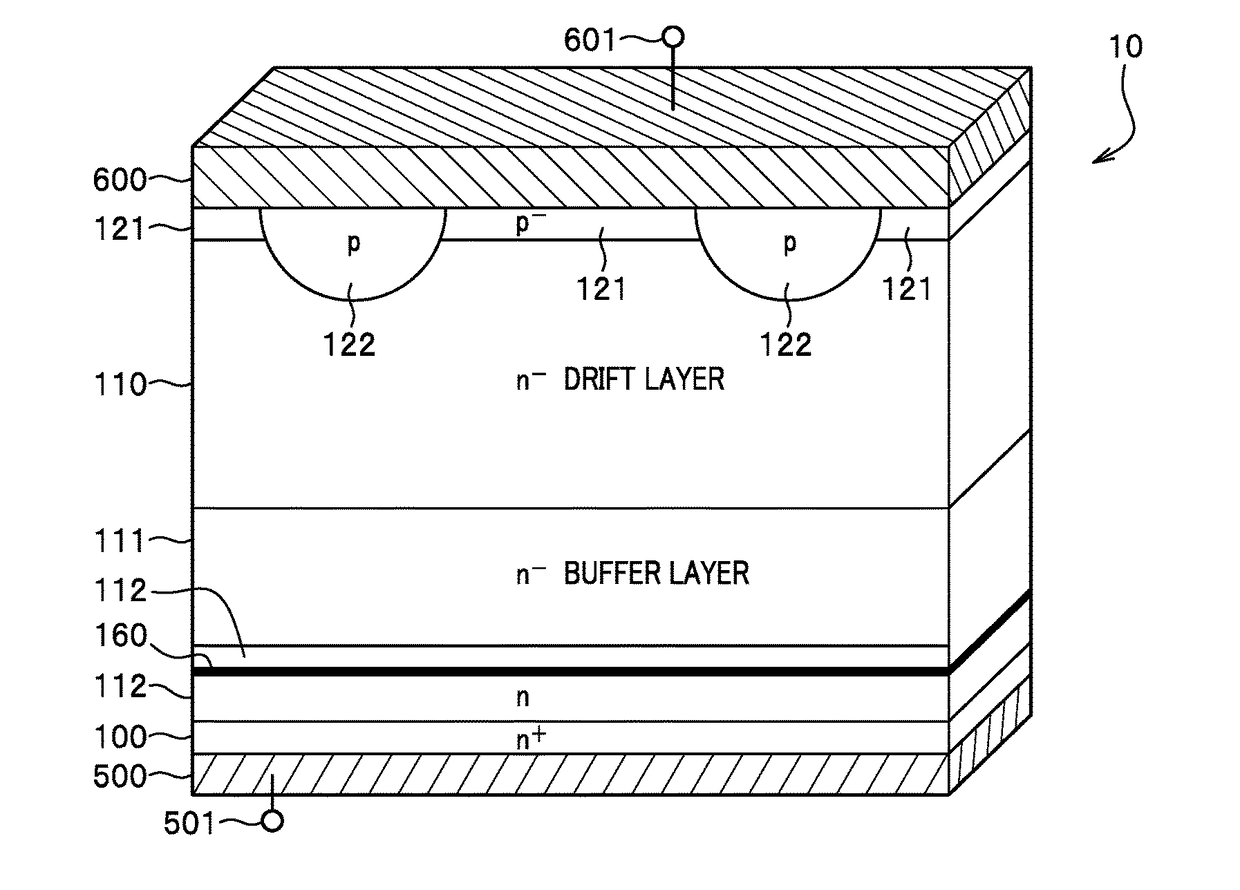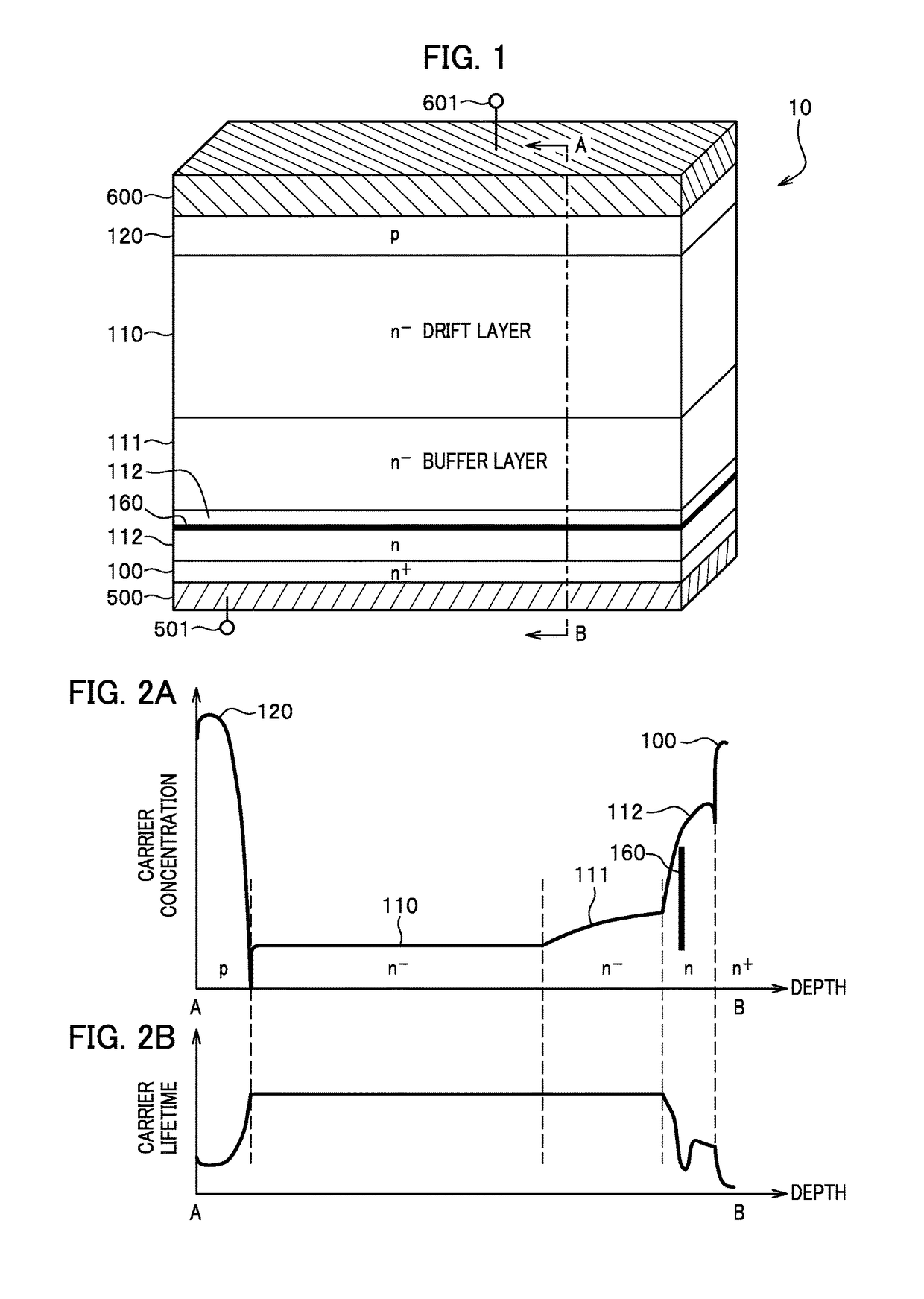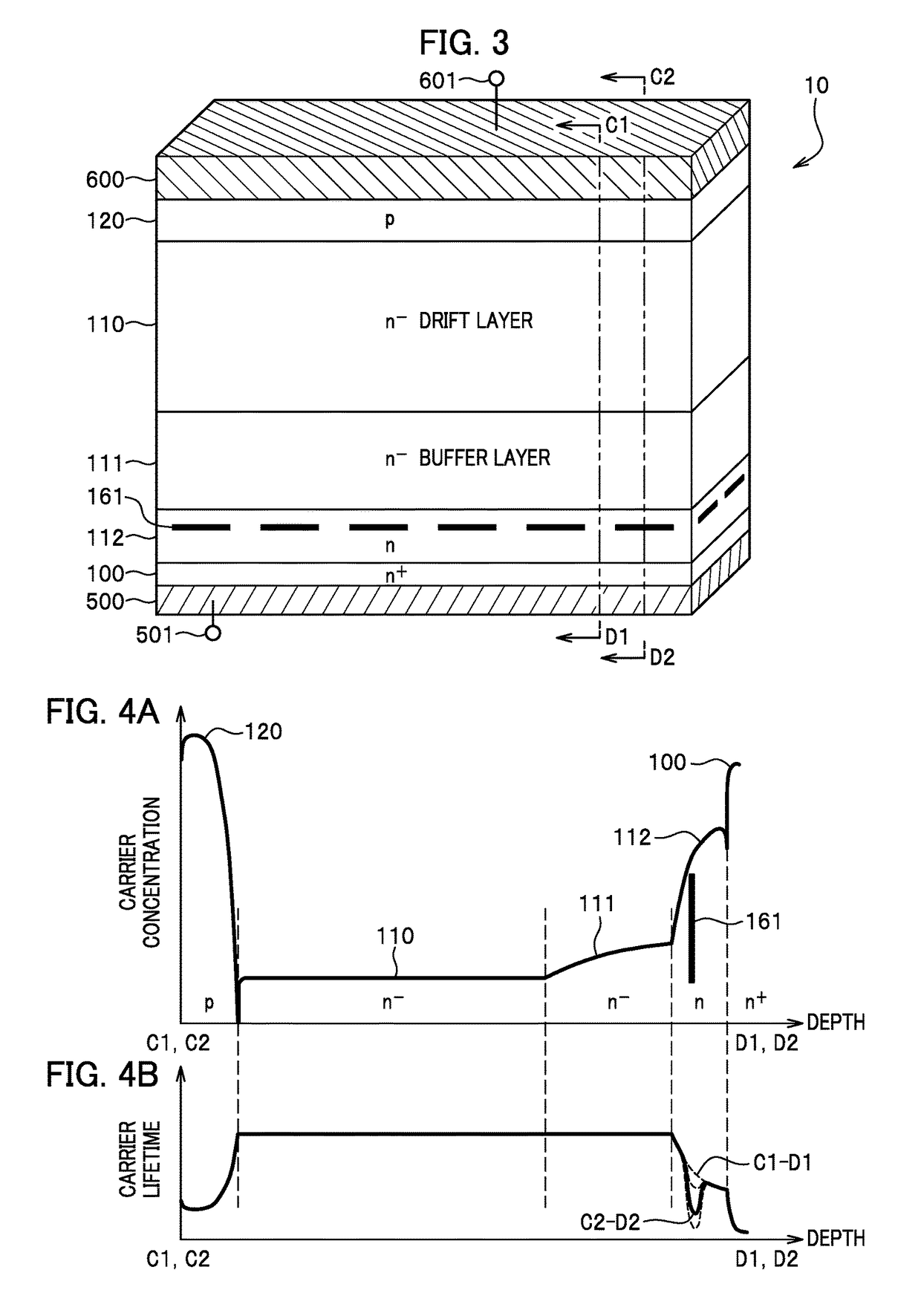Diode and power convertor using the same
a technology of diodes and power converters, applied in control systems, semiconductor devices, solid-state devices, etc., can solve problems such as adverse effects and breakdown of motor insulation, and achieve the effects of reducing carrier concentration, high resistance, and high resistan
- Summary
- Abstract
- Description
- Claims
- Application Information
AI Technical Summary
Benefits of technology
Problems solved by technology
Method used
Image
Examples
first embodiment
[0043]A diode 10 of a first embodiment of the present invention is described with reference to the drawings.
10>>
[0044]FIG. 1 is a diagram showing an example of an upper surface and a cross section of the diode 10 according to the first embodiment of the present invention.
[0045]In FIG. 1, the diode 10 is formed between an anode electrode layer 600 to which an anode electrode 601 is connected, and a cathode electrode layer 500 to which a cathode electrode 501 is connected.
[0046]Here, the anode electrode layer 600 and the cathode electrode layer 500 are layers mainly containing metal.
[0047]The anode electrode layer 600 is in contact with an upper surface (an upper surface in the drawing) of a p type semiconductor layer 120 (a second semiconductor layer of a second conductivity type).
[0048]A lower surface of the p type semiconductor layer 120 is in contact with an upper surface of an n− drift layer 110 (a first semiconductor layer of a first conductivity type).
[0049]A lower surface of t...
second embodiment
[0116]A diode 10 of a second embodiment of the present invention is described with reference to the drawings.
[0117]FIG. 3 is a diagram showing an example of an upper surface and a cross section of the diode 10 according to the second embodiment of the present invention.
[0118]In FIG. 3, what is different from FIG. 1 is a structure of a low carrier lifetime control layer 161.
[0119]The low carrier lifetime control layer 161 is formed partly inside a shallow n buffer layer 112. For example, the low carrier lifetime control layer 161 exists in a cross section taken along a line C2-D2 in FIG. 3 as in the low carrier lifetime control layer 160 in FIG. 1, but does not exist in a cross section taken alone a line C1-D1 in FIG. 3.
[0120]FIGS. 4A and 4B are diagrams showing an example of depth-direction cross-sectional profiles on cross sections, taken along the lines C1-D1 and C2-D2 in FIG. 3, of the diode 10 according to the second embodiment of the present invention. FIG. 4A presents a carrie...
third embodiment
[0127]A diode 10 of a third embodiment of the present invention is described with reference to the drawings.
[0128]FIG. 5 is a diagram showing an example of an upper surface and a cross section of the diode 10 according to the third embodiment of the present invention.
[0129]In FIG. 5, what is different from FIG. 1 is that a low carrier lifetime control layer 162 is provided in a deep n− buffer layer 111. More specifically, the shallow n buffer layer 112 in FIG. 1 is not present but the deep n− buffer layer 111 also serves as the shallow n buffer layer 112 of the n type.
[0130]Here, the high-concentration n+ layer 100 in FIG. 1 is presented as a high-concentration n+ layer 104 in FIG. 5.
[0131]Moreover, FIG. 5 showing the third embodiment is different from FIG. 1 showing the first embodiment only in the absence of the shallow n buffer layer 112, and the positional relationship between the deep n− buffer layer 111 and the low carrier lifetime control layer 161. For this reason, the redun...
PUM
 Login to View More
Login to View More Abstract
Description
Claims
Application Information
 Login to View More
Login to View More - R&D
- Intellectual Property
- Life Sciences
- Materials
- Tech Scout
- Unparalleled Data Quality
- Higher Quality Content
- 60% Fewer Hallucinations
Browse by: Latest US Patents, China's latest patents, Technical Efficacy Thesaurus, Application Domain, Technology Topic, Popular Technical Reports.
© 2025 PatSnap. All rights reserved.Legal|Privacy policy|Modern Slavery Act Transparency Statement|Sitemap|About US| Contact US: help@patsnap.com



